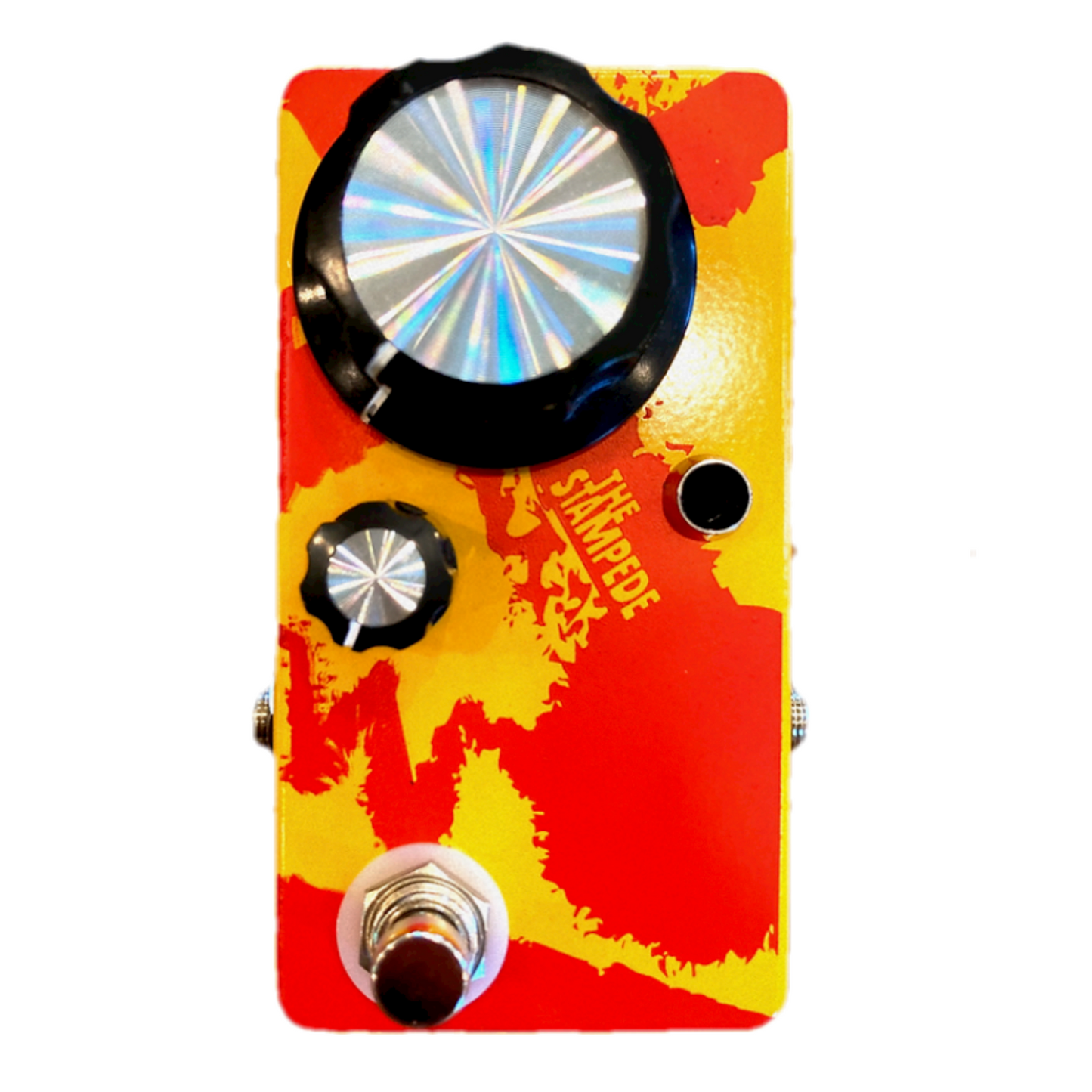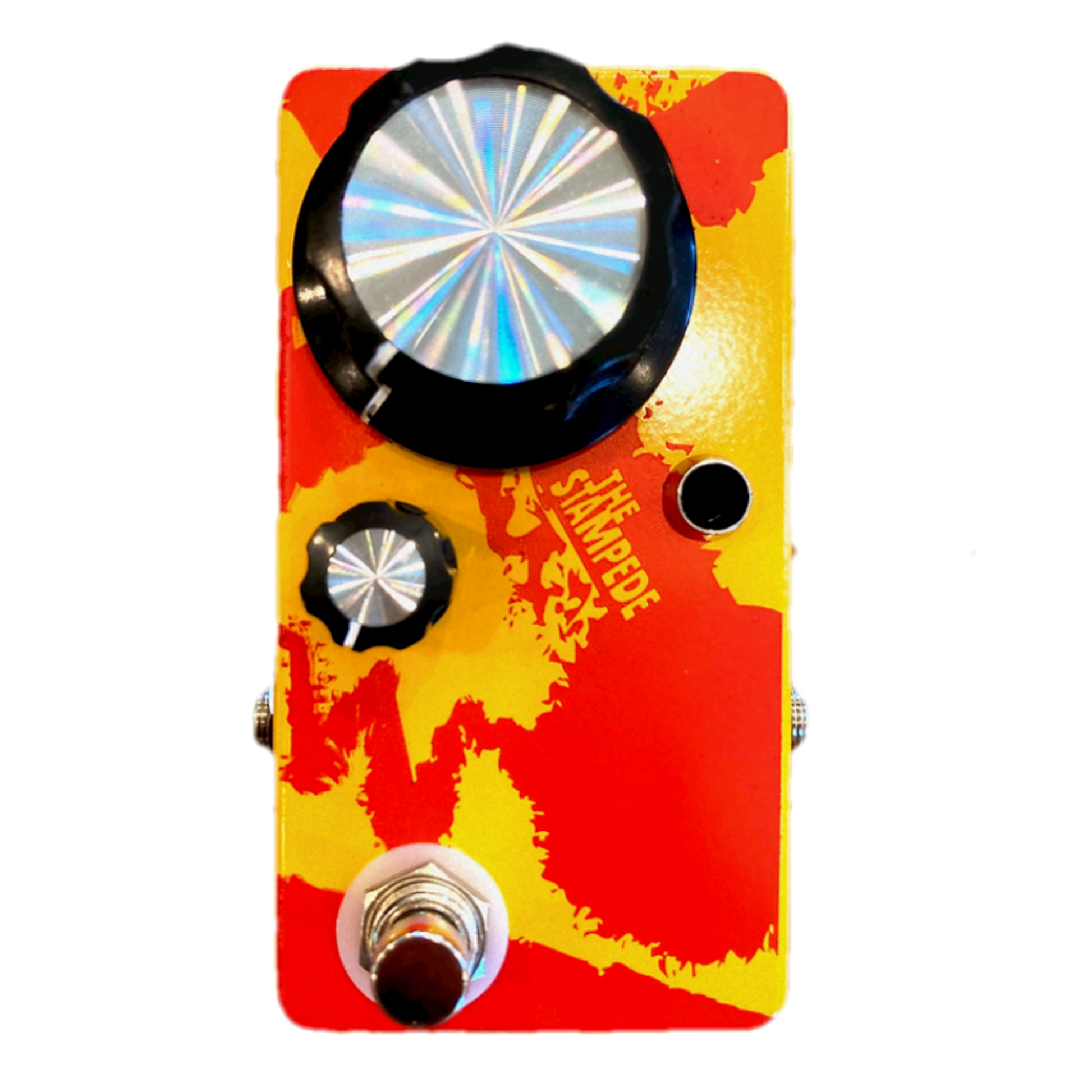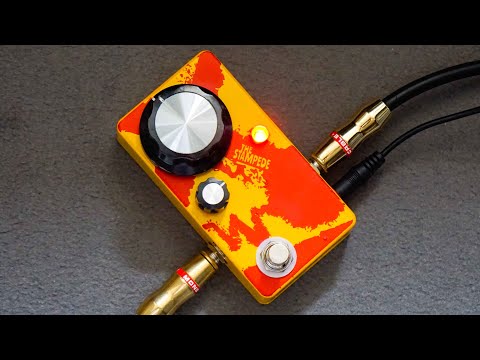Hungry Robot Pedals
The Stampede
The Stampede
FREE 2Day Shipping
FREE 2Day Shipping
USA Free 2 Day Shipping
(Next Day in New England)
Canada NOW FREE
Worldwide 30USD Flat Rate*(Wherever you are)
Flat Rate means no additional charge for more than one pedal.
No Hassle Returns
No Hassle Returns
Pedal Features
Pedal Features
Current Draw: 97 mA
Dimensions: 5.7” x 4.7”
Powering: 9V DC - Negative Center - 2.1mm Barrel
Couldn't load pickup availability
Hungry Robot Pedal's"The Stampede" is a glitchy, square-wave CMOS fuzz that
runs off a 4069 CMOS chip for chaotic, synth-esque, fuzz tones. CMOS fuzzes work by taking your signal and transforming it into a square wave which makes it sound like a synth. To liven things up a bit, "The Stampede" has a fixed 3-band active EQ with the Low Pass and High Pass running hot and the Band Pass subtly scooping out the midrange.
The two knob setup allows for simple control. The large knob controls the volume and the small knob sets the sensitivity The sensitivity dials in the volume of the signal before it hits the front end of the CMOS chip.
The sensitivity knob can range from barely registering to self-oscillation with a lot of fun and variety in between. Results will vary depending on your setup. With my setup, the lower sensitivity setting creates an accidental sub-octave when dialed in real low. As you turn the knob higher it starts to function as intended. Your guitar's tone knob lets you adjust the smoothness of the fuzz without affecting the output sound... your tone knob is a low-pass filter that simplifies the sound wave allowing for the CMOS to register your sound more accurately. The higher you turn the sensitivity knob, the more artifacts you get as the circuit starts to become more unstable and more glitchy. With it maxed out, you will likely experience max chaos with self-oscillation as the CMOS chip is picking up any trace of floor noise and trying to convert that into a square-wave.





